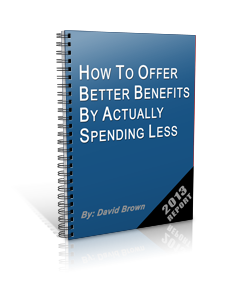 Beginning January 1, 2015, all large employers that do not offer affordable health insurance to their employees may be required to make an employer shared responsibility payment under the Affordable Care Act. Businesses will be subject to the penalty if one or more of their full-time employees gets health insurance for a lower rate in the Exchange (coveredca).
Beginning January 1, 2015, all large employers that do not offer affordable health insurance to their employees may be required to make an employer shared responsibility payment under the Affordable Care Act. Businesses will be subject to the penalty if one or more of their full-time employees gets health insurance for a lower rate in the Exchange (coveredca).
An employer’s status as a large or small employer is based on the number of full-time equivalent employees it has. Businesses with 50 or more full-time equivalent employees are classified as large employers, while those with less than 50 full-time equivalent employees are classified as small employers.
How Are Your Employees Classified?
To establish whether you are a small or large employer, calculate the number of employees you have in each of the following categories:
- Full-Time Employees: A full-time employee is a person who works an average of 30 or more hours per week. However the IRS considers any employee who works 130 hours per month or more to be full-time.
- Part-Time Employees: Add all part-time employee hours together and divide by 120 per month. This is the number of employees you have with full-time equivalent status. Full-time equivalent status is used only to classify businesses as small or large employers. Employers are not subject to fines if part-time employees obtain health insurance at lower rates in the Exchange (coveredca).
- Full-Time Variable Hour Employees: Variable hour employees work inconsistent schedules. Their hours cannot be calculated in advance because of the unpredictability of their schedules. A variable hour employee is considered full time for the prospective stability period if they averaged 30 hours per week or more during the standard measurement period. The standard measurement period must be 3-12 consecutive months.
Are You a Large Employer?
Use the worksheet below as a guide to determine whether you are a large employer. Only hours worked in the United States should be used in the calculation, and seasonal employees who work less than 120 days per year may be excluded.
- _____ Number of full-time employees (employees who work an average of 130 hours/ month or more)
- _____ Number of part-time hours worked/120 (equals the number of full time equivalent employees)
- _____ Number of variable hour employees classified as full time
- _____ Total number from all 3 categories
If the total is less than 50, you are classified as a small employer, and you are not subject to penalties if you don’t offer affordable health insurance. If the total is more than 50 you are considered a large employer under Obama Care. You could be required to make an employer shared responsibility payment if you don’t offer affordable health insurance.
This calculation must be completed every month. And every year in December you must add your monthly employee headcount together for the year and divide it by 12 to find the monthly average. If this number is more than 50, you will be classified as a large employer for the following year.
What is the Impact on Hiring?
Because employers are not subject to fines based on their part-time employees, businesses may choose to hire employees on a part-time basis. This probationary period gives them a chance to decide whether or not the employee is a good fit with their organization without being subject to the fines associated with full-time employees. If the employer decides to move the employee to full-time status, they would be required to offer benefits, as mandated by law, within the first 60 days of full-time employment.
When will our Company Plan be subject to Health Care Reform ?
Under the current regulations, employers may renew their existing coverage in 2013. For example, if your plan is scheduled to renew in November 2013, you can keep your current plan until November 2014 at which time you will be subject to the regulations under Obama Care.



